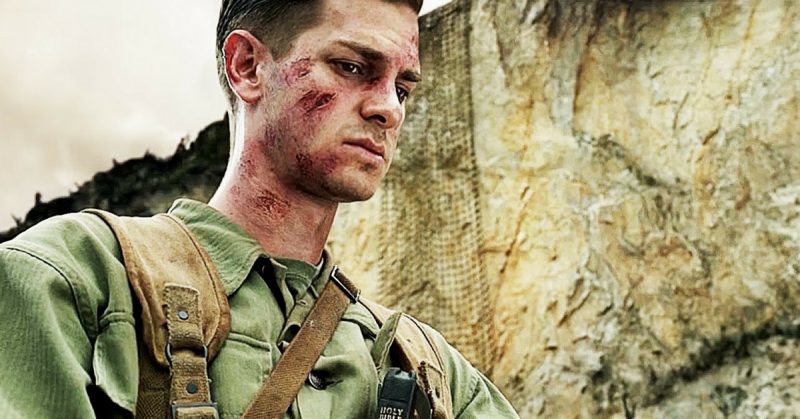Hacksaw Ridge spins a crowd-pleasing yarn about a simple man who possessed extraordinary mettle and bravery. Desmond Doss, a ‘conscientious cooperator’ from Lynchburg, Virginia, saved approximately 75 wounded men during the Battle of Okinawa.
It was a dreadful battle – the bloodiest of the Pacific Theatre. Some 12,520 US troops died while an estimated 110,000 Japanese perished. Mel Gibson, whose last film Apocalypto displayed his talent for breakneck action sequences, channels that same ferocity into Hacksaw Ridge’s superlative depiction of the landmark battle.
The combat scenes are loud, frenetic and protractedly visceral. Gore explodes from the screen while the excellent sound engineering surrounds you with whizzing bullets and thunderous explosions.
Gibson’s warfare is certainly within the realm of Saving Private Ryan and Band of Brothers, although there are some instances where the firefights may be slightly too gung-ho. Still, this is industry-leading stuff.
Technical prowess aside, the backbone of the film is Desmond Doss’s story at home, in boot camp and at war. Andrew Garfield gives a very endearing, wholesome performance as Doss, and Dorothy (Teresa Palmer), his love interest and later wife, is also the biggest doggone sweetheart you could imagine. Their relationship is a picture postcard of small-town Americana – it’s hard not to love!
Vince Vaughan shines as Sergeant Howell, the tough but wryly funny commander of Doss’s company. Howell’s men are introduced as he marches the length of their barracks, disparaging them with his seasoned trash talking. The film knows it can’t match Gunnery Sergeant Hartman and it doesn’t try, adopting instead for a slightly more forgiving character with a cruel sense of humor nonetheless.
Occasionally, Robert Schenkkan and Andrew Knight’s script does depart from the truth. For example, Doss met Dorothy in church, not hospital. Indeed, Dorothy wouldn’t become a nurse until many years after the war to support Doss, whose war wounds prevented him from holding a full-time job.
There has also been some dramatic license used with Doss’s court martial and his relationship with his father. However, perhaps the biggest difference between the film and reality is that the Maeda Escarpment (aka Hacksaw Ridge) appears to be half the size of the daunting cliff face we see. Despite this, Hacksaw Ridge is veracious on the most important details, especially compared to Braveheart, Apocalypto, and The Patriot.
Superstition is generally useless and often harmful. But Desmond Doss’s cast iron faith and superstition caused him to repeatedly enter the abyss with the mantra ‘just one more.’ One more father, one more brother, one more husband.
After 14 years in ‘development hell,’ Gibson has finally told this remarkable story with stirring, poignant reverence.
Reviewed by Jack Hawkins
Trailer
https://www.youtube.com/watch?v=9BqgHYLvHIE
